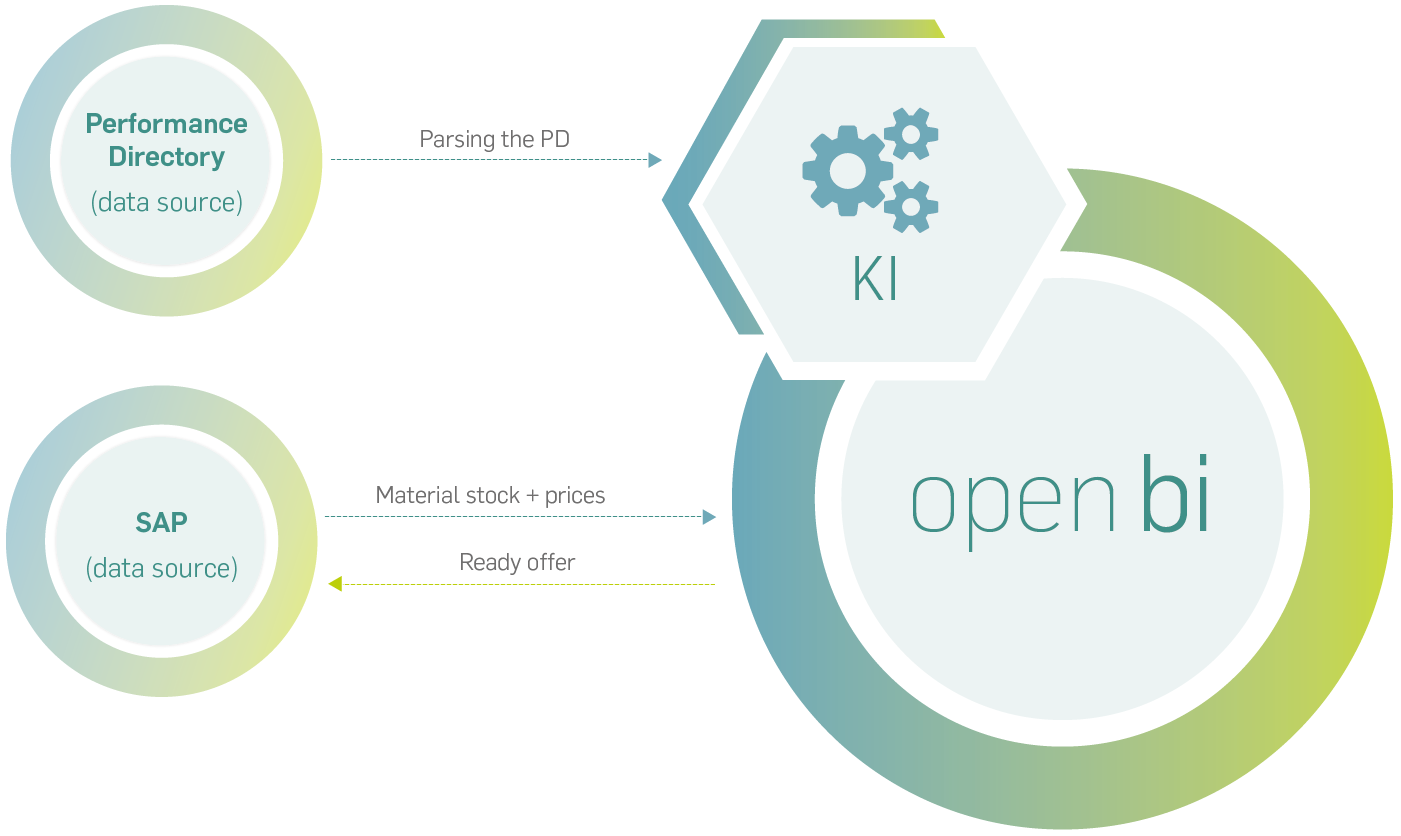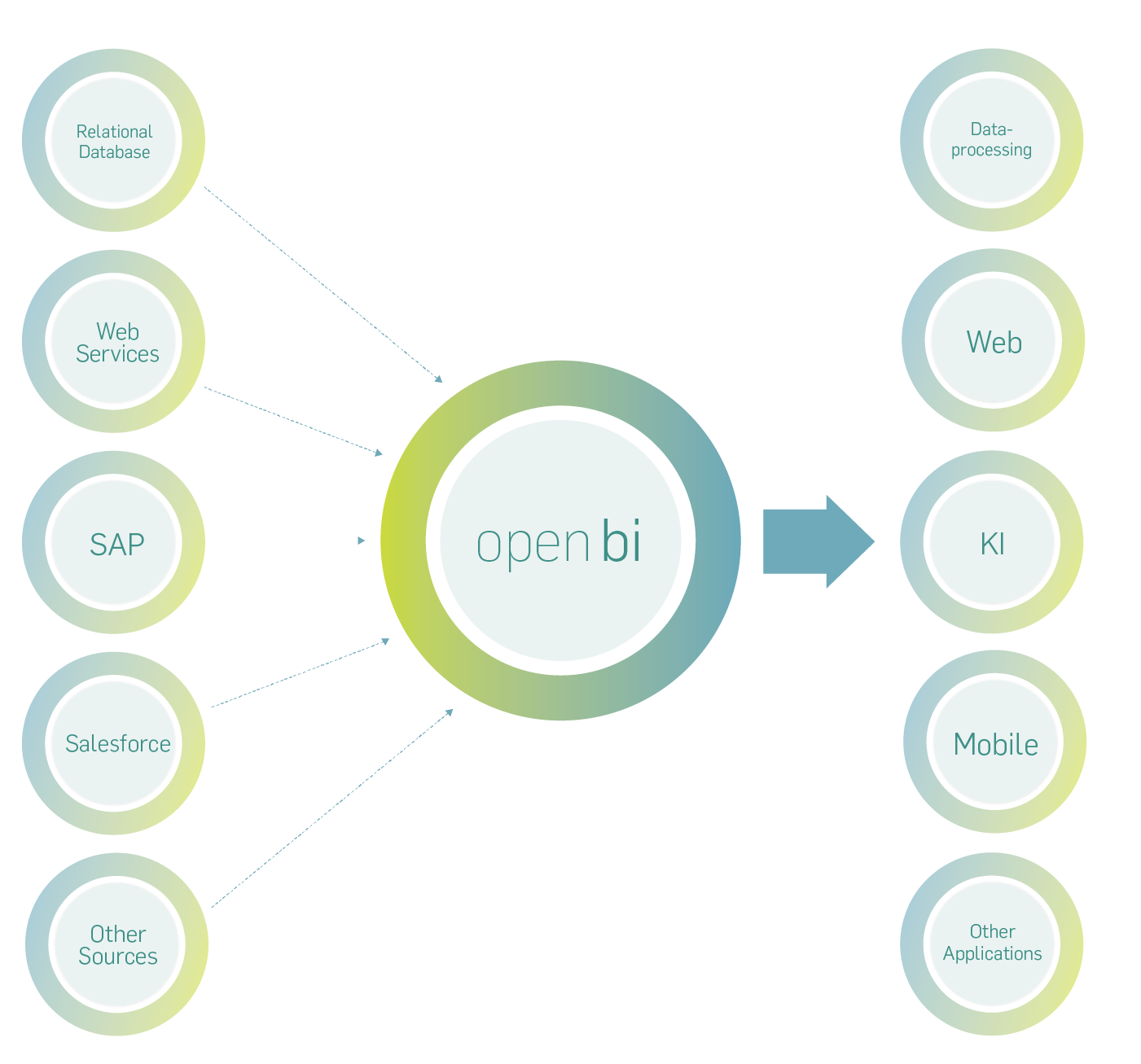Data connectivity
Data access
With our solution, you can process all data, no matter how it is stored in different source systems, in the same way - in order to combine, compare or make cross-cutting calculations - and finally display it to the end user at the front end. To do this, open bi uses a uniform null language that we have developed ourselves.
With the help of open bi, you can, for example, compare data from your online shop with data from Google Adwords, because you want to determine which of your advertising campaigns have generated the most revenue. Decide for yourself which data is most important to you and benefit from this knowledge advantage!
The data remains in the respective data source, for example a hierarchical or relational database, and data access happens in real time. The advantages are obvious:
- No redundant data storage, but "one source of truth"
- Reduction of memory consumption
- No loading and waiting times, but direct access to the most current data
Authorisations
This way, open bi can reuse the users licensed for the source system and thereby reuse also the existing authorisations - users automatically only see those views and data that have been released for them. A "single sign-on", which eliminates the need to enter a user name and password when accessing the source system, can also be configured if needed.
Data sources
There are currently over 50 connectors that allow access to hundreds of different data sources. The list of data sources is constantly being expanded. In addition, the implementation of an individual connection, which is perfectly adapted to your requirements, can be realised very efficiently.
 All product and company names are Trademarks™ or Registered® Trademarks of their respective owners. Their use does not imply any affiliation with or endorsement by these companies.
All product and company names are Trademarks™ or Registered® Trademarks of their respective owners. Their use does not imply any affiliation with or endorsement by these companies.
Write back
open bi can access all systems bidirectionally: data access does not only mean reading existing data from the source systems, but also writing back newly derived information!
For example, you can use an open bi application to create operational data such as leads or offers in the source system; you can make open bi analytical data available in the operational system; you might return enriched master data to another system or save planning data directly in your leading BI system!
Of course, user data permissions can also be automatically reused here - write permissions can thus be managed directly in the source system.

